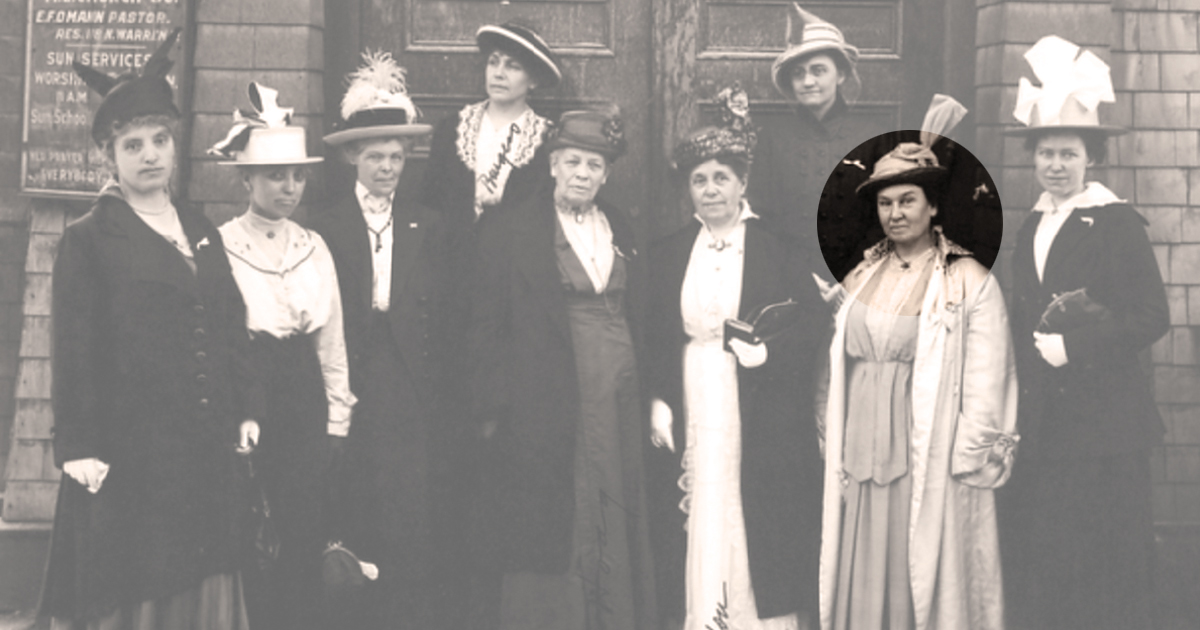Occasionally a significant Montana pioneer’s name vanishes or becomes overshadowed in history. While we are in the midst of those years that we are remembering the strides made in woman’s suffrage a century ago, Mary Long Alderson’s story should be summoned because of her contributions to Montana.
Alderson was born in Weymouth, Mass., June 19, 1860. Having been educated, she became a school teacher. At the age of 27, she had already concluded she was destined to be a spinster, until she met widower Matt Alderson. They were married in Braintree, Mass., and quickly made their home in Bozeman, Mont., where Matt Alderson was engaged with his father in the publishing of the Bozeman Avant Courier.
It was in this forward-thinking environment that Mary Long Alderson settled. In the next decade, she and Matt had three daughters, but she was never a full-time, stay-at-home mother. Joining a family of newspaper journalists, Alderson took on writing as a job and quickly established herself as a respected journalist. She was among the few female members of the Montana Press Association. She often wrote about women’s issues and encouraged women among the newspaper’s readership to become progressive.
In 1893, the young family visited Chicago and attended the World’s Columbian Exposition (a world’s fair celebrating the 400th anniversary of Christopher Columbus’ arrival in the new world in 1492). Mary Long Alderson heard Suffragist Susan Anthony speak at the Women’s Congress, which was billed as the “Meeting of Brainy Women of All Lands.”
That presentation solidified Alderson’s previous thinking and gave her a cause that guided the rest of her life.
Having become a member of the Women’s Christian Temperance Union (WCTU), Alderson took a leadership role. The WCTU stood for one standard of morals for men and women, equal rights, a living wage, an eight-hour day, and equal pay for equal work. It emphasized moderation in all things healthful and total abstinence from all things harmful.
Within the bounds of this philosophy was the attempt to rid society of alcohol and tobacco.
Women’s right to vote was a salient issue in Montana from 1885–1920, and Alderson, whose family had moved to Helena during this period, was frequently seen lobbying the men legislators who would be the voters. The WCTU was always organized and lobbied for suffrage whenever and wherever possible. Other women’s groups tended to gear up every two years just before the Montana legislature met.
Alderson served as Montana’s WCTU president during the very important years from 1913 until 1916, when the fervor for the right to vote was the highest, and membership was at its greatest. Approximately 1500 Montana women were members of 50 chapters.
Alderson served as the editor of Montana’s WCTU Journal that was the mouthpiece for the organization for 30 years. In this capacity, she had opportunities to either correspond or meet other suffragists, such as Clara Barton, Frances Willard, Harriet Beecher Stowe and Louisa May Alcott, which aided in keeping the fire within Alderson ongoing.
The WCTU had adopted the bitterroot as its flower in 1891 and sent it with Alderson as Montana’s representative to the World’s Columbian Exposition. Alderson came home determined to have a state flower. She formed the Montana Floral Emblem Society in 1894 where she single-handedly formed committees at the county and community level.
The outcome was to have a statewide election for the state flower in the summer of 1894. With the help of her newspaper husband, other newspapers got into the action by promoting the project.
Newspapers took sides by listing the virtues of their favorite flower. The voting culminated on September 1, with the evening primrose coming in second and the bitterroot that Meriwether Lewis listed as a newly discovered plant being overwhelmingly first. Then Alderson coaxed the legislature into passing a bill adopting the bitterroot as the state flower on February 27, 1895. The bitterroot remains the state flower today.
Alderson wrote and spoke against all things that repressed women. She used dress as an example of how women struggled in many areas and encouraged women to cast aside high heels, corsets that kept them from breathing freely, and dresses that were so long that they dragged in the dirt. Long skirts gathered “mud, dust, dirt, and possibly disease germs. A woman might master a science in the time she spends cleaning and repairing her skirts,” she wrote.
Alderson often quoted feminist Celia B. Whitehead, who said, “Until woman is allowed to have ankles, there is no hope for her brains.”
As the years passed, and women saw the need to stay organized from one legislative session to the next, a newcomer, Jeannette Rankin, joined the ranks of women lobbyists. She had worked in women suffrage campaigns in California and Washington, and she knew how to organize. In determining their strategies, women leaders saw that if they were going to win the right to vote, they had to separate themselves from the prohibition issue. The Tavern Association could discourage support of suffrage.
Alderson resented the suggestion that advocacy of prohibition hindered support of suffrage, so the WCTU ran its own campaign.
When the legislature met in January 1913, many legislators said they would support suffrage for the first time while before they thought of it lightly as a joke. Both houses in the legislature voted in favor of placing an amendment to the constitution for women’s suffrage on the 1914 ballot. As a result, the decision was taken to the people.
The women continued to press for a vote in their favor from men at large by canvassing the state. Quietly the women suffragists separated themselves from those in the WCTU, which wouldn’t budge from their stand on prohibition. When the big parade during the fair in Helena was being organized the summer of 1914, Mary Long Alderson’s WCTU was not permitted to march under its own banner, even though she and other members had worked for years when no one else was lobbying on this issue.
Later Alderson wrote in the Women’s Voice, “It is laughable to have the suffragists so considerate of the liquor men…So the oldest suffrage organization in the state…was not represented in the parade. But quiet work counts more than the ‘Harrah’.”
However aggravated Alderson might have been, she did not cause a chasm in relationships that would have destroyed the solid front the women were presenting, as had happened in other parts of the country. The parade was held, and the amendment giving women the right to vote was taken to the people in November and won with a vote of 41,302 to 37,588.
With women voting, prohibition won out in 1916, but the law turned out to cause widespread bootlegging and lawlessness. After ten years Montana became the first state to repeal prohibition in 1926. Alderson tried again in the late 1920’s to make the state “dry,” but the public had learned its lesson and mainly ignored her. She remained steadfast in her thinking to the end of her life.
Mary Long Alderson continued to write to let her stalwart beliefs in women’s rights be known. She resigned from the WCTU in 1930, but she continued to endorse issues, such as child welfare, labor laws, and education.
Having made her mark on Montana, Alderson was living in Bozeman when she died in 1940 at the age of 79.
We have Alderson to thank for being especially steadfast in working to gain women the right to vote, for encouraging women to be progressive, and for bringing forth the bitterroot as the state flower. MSN










